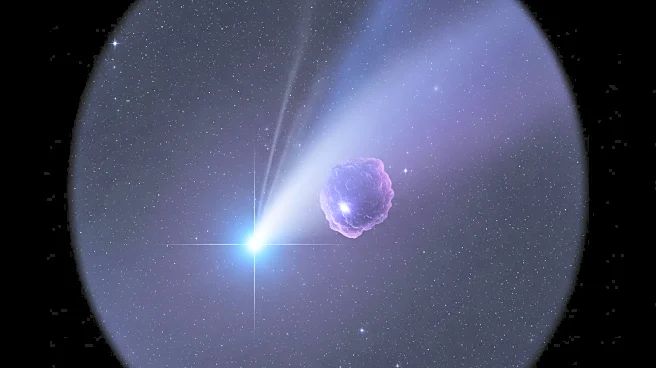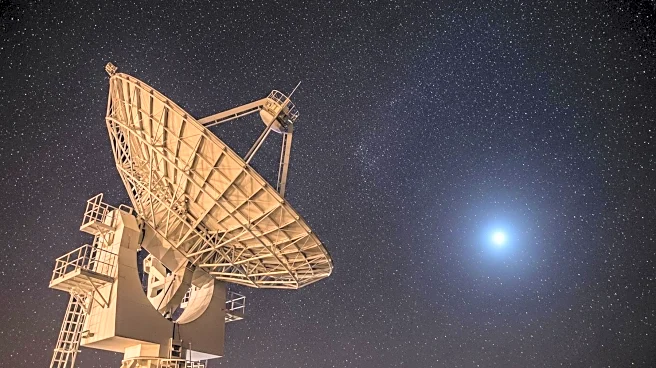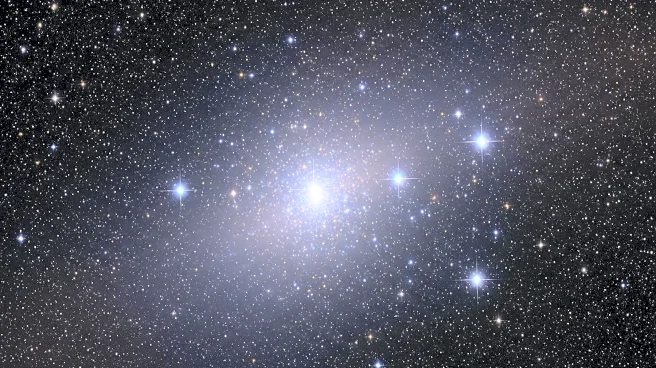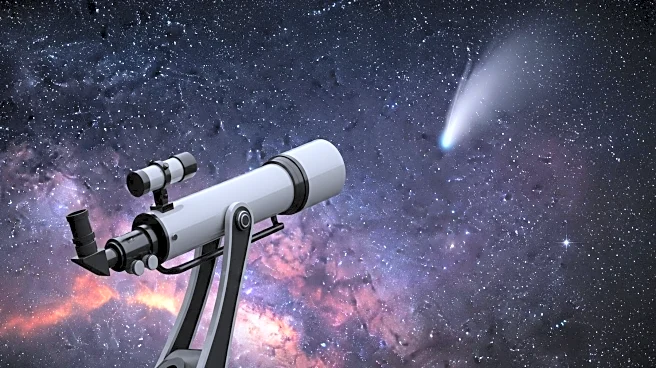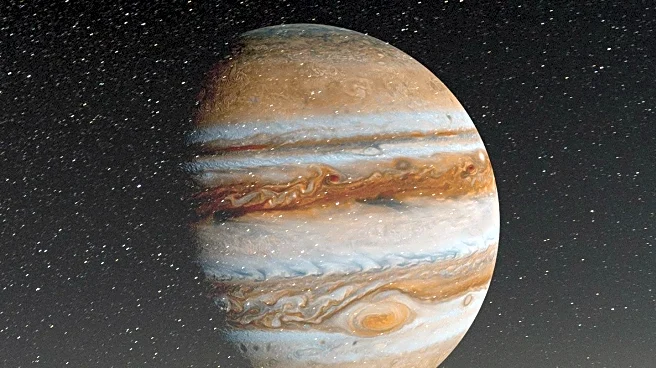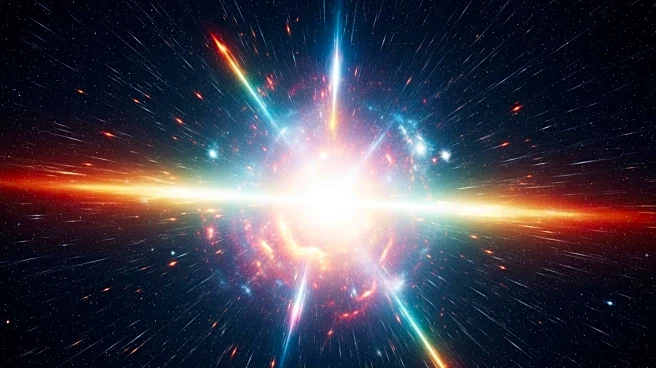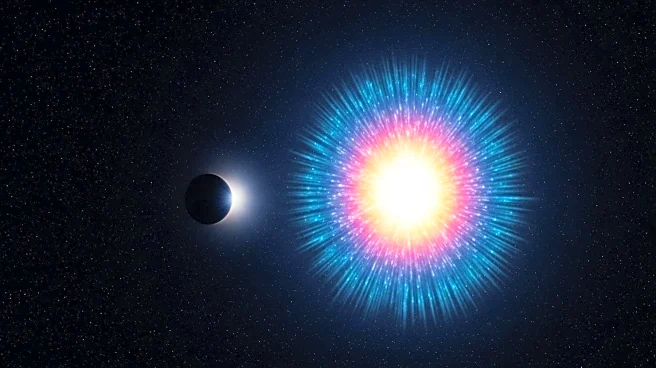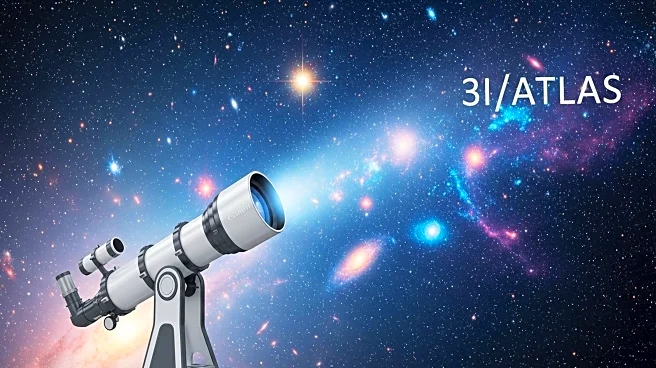What's Happening?
Astronomers have identified interstellar objects (ISOs) like comet 3I/ATLAS as common visitors to our solar system. These objects, which include planetesimals ejected from their original star systems, are believed to be abundant in the Milky Way. Despite their prevalence, only three such objects have been detected so far due to their small size and fast movement. The upcoming Legacy Survey of Space and Time (LSST) is expected to significantly increase the detection of ISOs, providing new opportunities to study these cosmic visitors and their origins.
Why It's Important?
The study of interstellar objects offers a unique opportunity to understand the composition and evolution of the galaxy beyond our solar system. By analyzing these objects, scientists can gain insights into the chemical makeup and history of other star systems. The increased detection of ISOs could lead to breakthroughs in our understanding of the Milky Way and the broader universe, potentially influencing future space exploration and research.
What's Next?
With the LSST and other advanced telescopic technologies coming online, astronomers anticipate a surge in the detection of interstellar objects. This will enable more detailed studies and potentially lead to missions aimed at capturing and analyzing these objects, providing a deeper understanding of their role in the galaxy.

